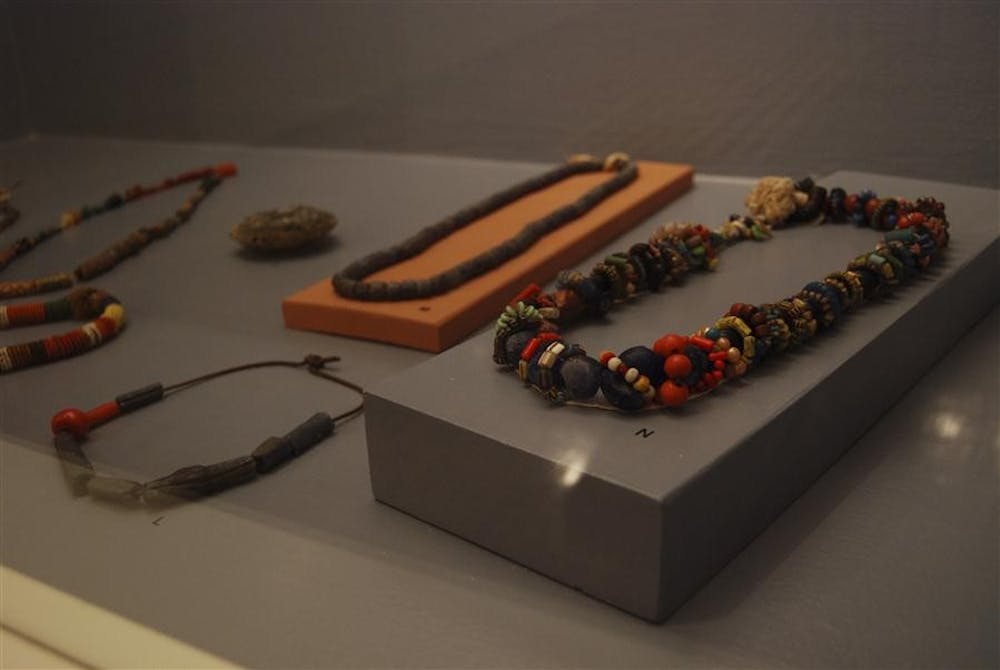It can hold the key to unlocking the vaults of ancient history, have the power to expose social injustices and is capable of sculpting society’s view of culture. Museums are the gateway to the past.
The beginning of October marked the start of “Celebrating the Museum,” a year-long event to recognize the contributions and impact of museums within the IU and Bloomington community.
Sponsored by the Office of the Provost, events and exhibitions highlighted through the celebration will encourage students and residents to take advantage of the opportunities and resources available within local museums.
IU Provost and Executive Vice President Karen Hanson, who spoke at the celebration’s opening ceremony, said the campus and city museums provide an intersection for a variety of interests displayed within the community.
“We know we have an especially rich environment on campus for such collections,” Hanson said. “We’re especially blessed with a number of top notch museums.”
Hanson said IU’s museums work closely with faculty and staff to encourage student interaction with the variety of resources available to them.
“Museums preserve culture and make the culture, whether it’s artistic objects, artifacts, costumes or household objects, available for students and residents, enriching the natural environment,” Hanson said.
From the IU Art Museum to the Kinsey Institute, IU is home to a wide range of museums that help preserve the past.
The Mathers Museum of World Cultures, named 2010 Best IU Attraction by the Bloomington/Monroe County Convention & Visitors Bureau, focuses on the question, “What is culture?” The museum’s various exhibits are intended to help visitors explore and understand the broader themes of global traditions and history.
Geoffrey Conrad, professor of anthropology and director of the Mathers Museum, said he believes museums represent the global perspective present at IU.
“A large theme for the University is international unitization,” Conrad said. “As the world becomes more interconnected, it is vital to understand how we can connect between cultures and their similarities.”
The Mathers Museum’s newest exhibit, which opens Oct. 23, is titled “The Big Bang to the World Wide Web: The Origins of Everything.” The exhibit will explore a concept known as “big history,” which seeks to gather an understanding of human history by starting at the beginning of time.
Free to the public, IU museums serve as a bridge between the University and the community.
“As an archeologist, we have an obligation to reach a public audience,” Conrad said. “There is a great deal of public interest in archeology, and we want to help feed this interest and also help in the field of archeology and anthropology.”
Kelsey Bidwell, a senior currently taking an Introduction to Museum Studies class at the Mathers Museum, said she feels that museums are a central element of the college experience.
“When you earn a degree from IU, part of that degree should be what you’ve learned from the museums, which adds to a well-rounded education,” Bidwell said.
Bidwell said she finds that the Mathers Museum represents a commonality of cultures throughout the world. When walking through the exhibits, she said people are likely to find many similarities between cultures and make personal connections with the world’s people.
Bidwell said the Lilly Library is her favorite campus museum for its collection of mechanical puzzles and various rotating exhibits.
Bidwell said the University is lucky for having such a narrowly focused collection of rare books that attract professional scholars.
While students have the opportunity to take classes and even intern at IU’s museums, Hanson said she finds most students walk right past them, despite their accessibility.
With the year-long initiative to celebrate the importance of museums, Hanson said she hopes it will inspire people to explore the unique opportunities that these institutions afford.
“We want to get them on people’s radar,” Hanson said. “Once they visit, they’ll see how much they can drive from these museums.”
IU celebrates impact museums have on community

Get stories like this in your inbox
Subscribe





